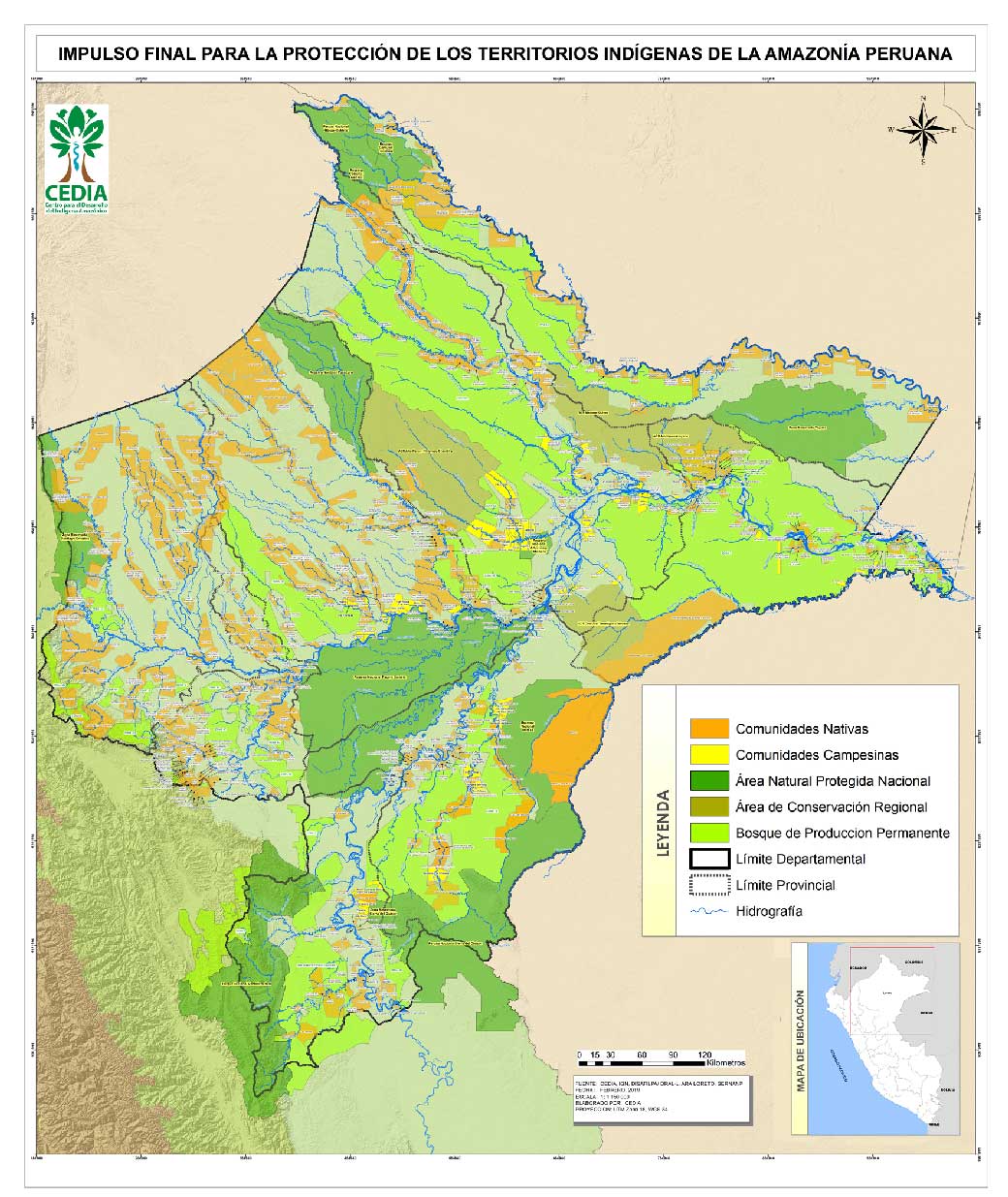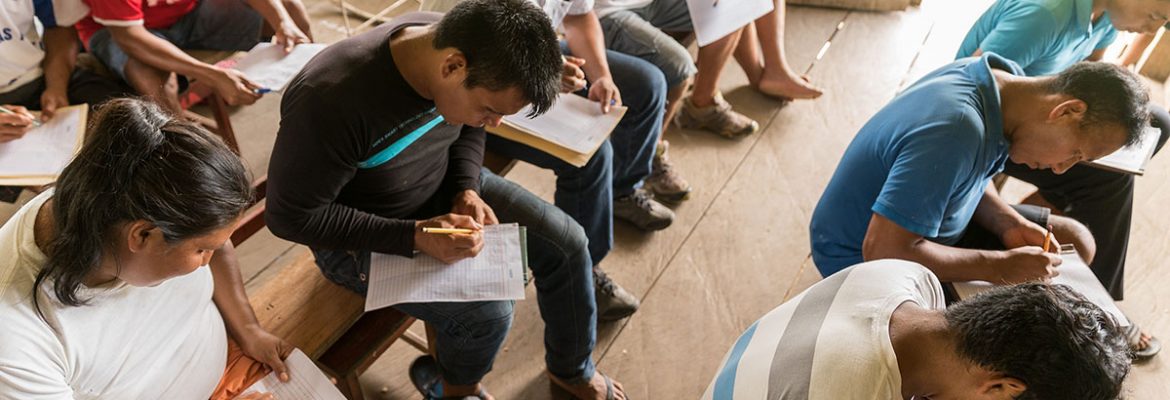Map of the «Final impulse for the protection of the indigenous territories of the Peruvian Amazon"
 Scope of execution
Natural region: Southern part of Loreto and throughout the Ucayali region to the foothills of the Andes.
Region: Loreto and Ucayali
Basins: Ucayali, Napo, southwest of the Amazon, Iquitos Varzea and Solimoes Japurá.
Expected results:
1) Diagnóstico de la propiedad y tenencia de la tierra y otros recursos naturales
2) Titulación de 220 comunidades, las cuales abarcan más de 6 millones de hectáreas. De esta manera, se protegerán legalmente los territorios indígenas
3) Protección de especies en peligro de extinción, como el mono araña de vientre blanco, la nutria gigante brasileña y el mono araña negro de cara negra
4) Más de 150 comunidades recibirán apoyo, elaborarán e implementarán sus Planes de Vida
5) Aproximadamente, 12 comunidades seleccionadas elaborarán e implementarán planes de manejo de sus recursos naturales
Scope of execution
Natural region: Southern part of Loreto and throughout the Ucayali region to the foothills of the Andes.
Region: Loreto and Ucayali
Basins: Ucayali, Napo, southwest of the Amazon, Iquitos Varzea and Solimoes Japurá.
Expected results:
1) Diagnóstico de la propiedad y tenencia de la tierra y otros recursos naturales
2) Titulación de 220 comunidades, las cuales abarcan más de 6 millones de hectáreas. De esta manera, se protegerán legalmente los territorios indígenas
3) Protección de especies en peligro de extinción, como el mono araña de vientre blanco, la nutria gigante brasileña y el mono araña negro de cara negra
4) Más de 150 comunidades recibirán apoyo, elaborarán e implementarán sus Planes de Vida
5) Aproximadamente, 12 comunidades seleccionadas elaborarán e implementarán planes de manejo de sus recursos naturales

